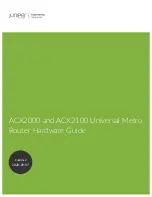
LANCOM 1722 VoIP – LANCOM 1723 VoIP – LANCOM 1724 VoIP – LANCOM 1823 VoIP
Chapter 8: Advanced wireless LAN configuration
86
EN
The areas where the waves amplify or cancel themselves out are known as
Fresnel zones.
The Fresnel zone 1 must remain free from obstruction in order to ensure that
the maximum level of output from the transmitting antenna reaches the
receiving antenna. Any obstructing element protruding into this zone will sig-
nificantly impair the effective signal power. The object not only screens off a
portion of the Fresnel zone, but the resulting reflections also lead to a signif-
icant reduction in signal reception.
The radius (R) of Fresnel zone 1 is calculated with the following formula
assuming that the signal wavelength (
λ
) and the distance between transmit-
ter and receiver (d) are known.
R = 0.5 *
√
(
λ
* d)
The wavelength in the 2.4 GHz band is approx. 0.125 m, in the 5 GHz band
approx. 0.05 m.
Example:
With a separating distance of 4 km between the two antennae, the
radius of Fresnel zone 1 in the 2.4-GHz band is
11 m
, in the 5-GHz band
7 m
.
Protecting the components employed from the consequences of
lightning strikes and other electrostatic influences is one of the
most important aspects to be considered when designing and
installing wireless LAN systems for outdoor use. Please refer to the
appropriate notes on
→
'Lightning and surge protection' as other-
wise LANCOM Systems cannot provide any guarantee for damage
to LANCOM and AirLancer components.
Information on the installation of WLAN systems for outdoor
deployment is available in the 'LANCOM Outdoor Wireless Guide'.
WLAN Router
ANTENNA
ADMINISTRATION
ACCESS POINT
ANTENNA
PRODUCTION
OBSTRUCTION
Fresnel zone 1
Fresnel zone 2
Fresnel zone 3
Radius R
Distance d
















































